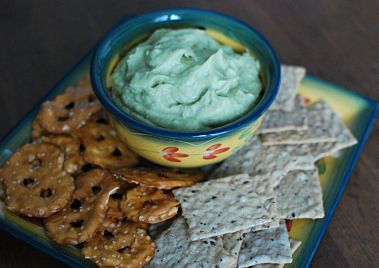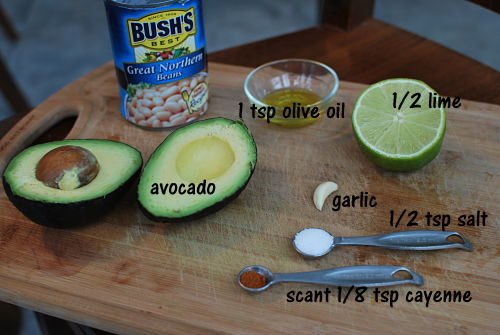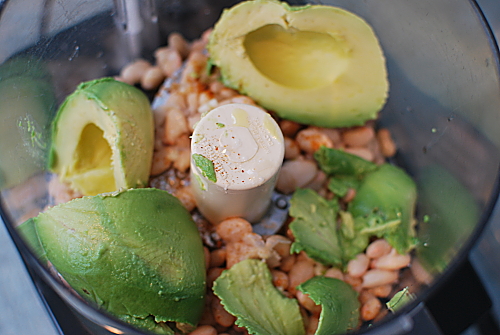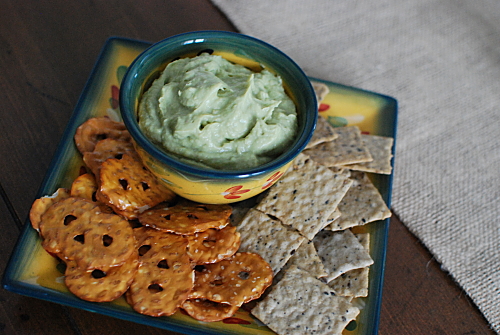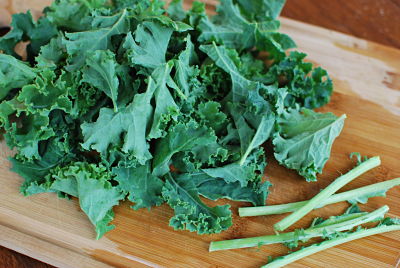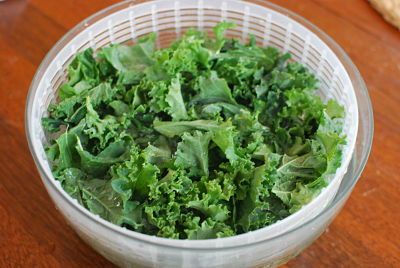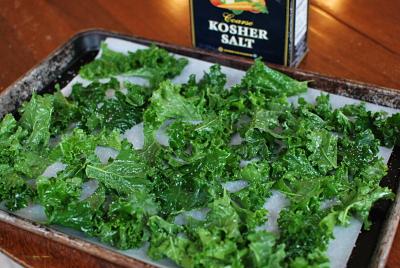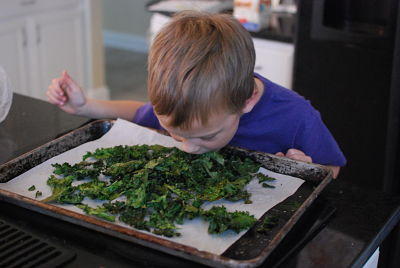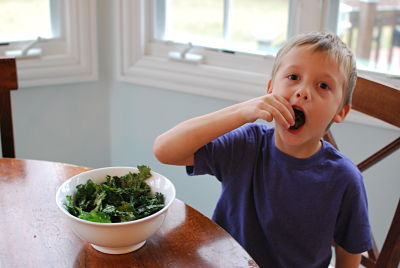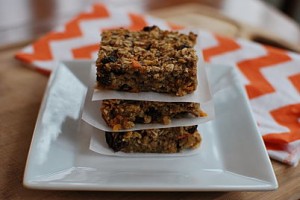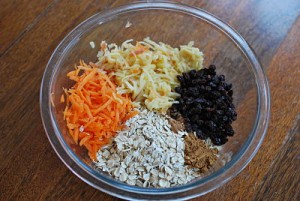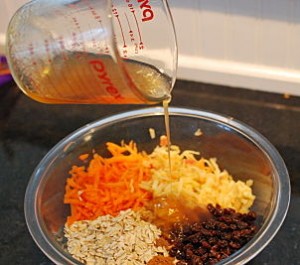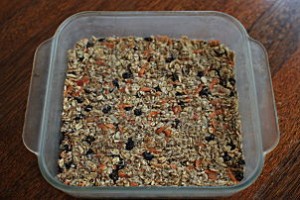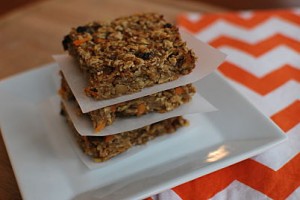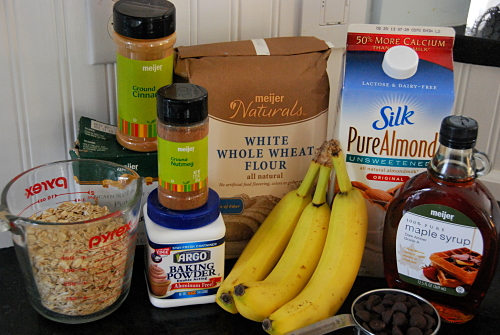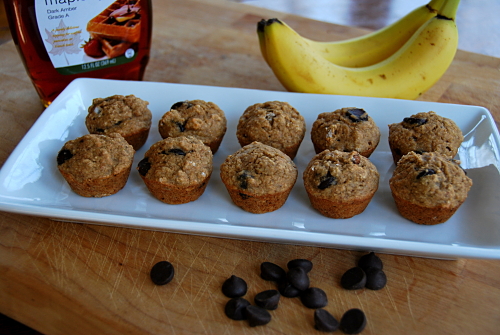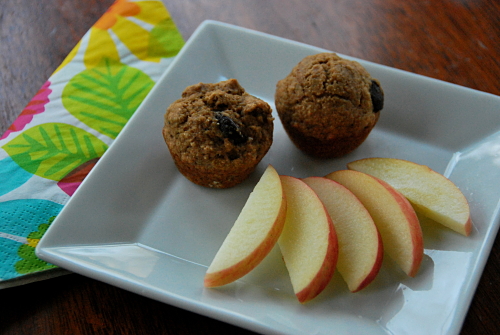I have been trying to branch out from standard store-bought hummus lately. It gets a bit pricey since we eat so much of it. But also, I just wanted to mix it up a little bit and try something different.
When I saw this dip on Pinterest, I just knew it would be a winner! Not exactly hummus, but more of a hummus guacamole blend. Quick, easy, kid friendly, versatile, and tastes great. What more can you ask for?!?
Avocado and White Bean Dip
First things first, I always wash my produce before I cut into it since this can transfer germs from the outside into the fruit or vegetable that you’re cutting!
Slice the avocado length-wise all the way around and twist to open. Using a large sharp knife, give it a good whack into the pit and twist to remove it (see this youtube tutorial if you’re not familiar with this method of pitting an avocado).
Scoop the avocado flesh out and place it into the bowl of a food processor fitted with the “S” blade. Squeeze the juice from the lime half into the bowl and add the remaining ingredients.
Place the lid on the food processor and process until smooth.
And in less than 10 minutes, you will have white bean and avocado dip packed with fiber (roughly 10 grams per serving!) and nearly 20 different vitamins, minerals, and phytonutrients. I especially like that you can store this dip in the refrigerator for a few days without it turning brown like traditional guacamole.
You can serve this with a combination of raw veggies and crackers (I prefer gluten-free rice crackers) or other chips (tortilla, pretzel chips, etc) for an appetizer or well-balanced snack.
Avocado and White Bean Dip
Ingredients
1 ripe avocado
1 can of Great Northern beans, drained and rinsed well
1 /2 lime
1 tsp extra virgin olive oil
1 clove garlic, minced
1/2 tsp kosher salt
1/8 tsp cayenne pepper (or to taste)
Directions
Add the flesh of one avocado, the juice of 1/2 of a lime, olive oil, minced garlic, kosher salt, and cayenne pepper to the bowl of a food processor fitted with the “S” blade. Process until smooth. Adjust seasonings to your liking (more lime, salt, or cayenne). Serve with veggies, chips, or crackers.
I am quite obsessed with kale. When I combine my finance background with my love for nutrition, the reasoning goes something like this – you simply cannot get more nutritional bang for your buck when it comes to kale!!!! For a mere $1.49, I can get a bunch of kale so big that I have to wrestle it into the bag. I must look like I’m losing the battle sometimes because I have had people in the grocery store ask me what it is that I am buying!

There are a lot of reasons why kale is considered one of the healthiest vegetables on the planet.
The Nutritional Details: One cup of kale contains 36 calories, 5 grams of fiber, and 15% of the daily requirement of calcium and vitamin B6 (pyridoxine), 40% of magnesium, 180% of vitamin A, 200% of vitamin C, and 1,020% of vitamin K. It is also a good source of minerals copper, potassium, iron, manganese, and phosphorus. (SOURCE)
What does all of that mean???
- Kale is a rich source of antioxidant vitamins A, C, and K, fiber and carotenoids. Research has shown that kale contains 45 different flavonoids with a variety of antioxidant and anti-inflammatory properties.
- It is a very potent source of vitamin K, which can reduce the overall risk of developing cancer, according to a study in the American Journal of Clinical Nutrition.
- Kale is one of the best sources of beta-carotene, one of the antioxidants believed by many nutrition experts to be a major player in the battle against cancer, heart disease, and certain age-related chronic diseases.
- Kale possesses other important carotenoids: lutein and zeaxathin. These help keep UV rays from damaging the eyes and causing cataracts.
- According to recent research results, kale is an incredible source of well-absorbed calcium, which is one of the many factors that may help prevent osteoporosis.
- The manganese in kale helps your body’s own antioxidant defense system, protecting you from damaging free radicals.
- Its folate and B6 team up to keep homocysteine levels down, which may help prevent heart disease, dementia, and osteoporosis bone fractures.
- Beyond antioxidants, the fiber content of cruciferous kale binds bile acids and helps lower blood cholesterol levels and reduce the risk of heart disease, especially when kale is cooked instead of raw.
Something else I found particularly interesting is that kale contains indole-3- carbinol, a nutrient that seems to play a role in how estrogen is metabolized in the body and may play a protective role against breast cancer. According to the naturopathic physician quoted in this article, “We sometimes use it as a supplement in patients with breast cancer, anyone who has a reason to be concerned about developing breast cancer and for those with estrogen-dominant illnesses like fibroids, fibrocystic breast disease or endometriosis, to try to help modulate negative estrogenic effects in the body. Eating kale is a natural way to do that.”
With all that being said, I learned a couple of years ago when my mom was experiencing some heart problems that the high amount of vitamin K can cause problems for some people. Anyone taking anticoagulants (blood thinners, such as Warfarin, Coumadin, etc) or other medications should avoid kale because the high level of vitamin K may interfere with the drugs. Please consult your doctor before adding or increasing the amount of kale and other greens to your diet.
But for those who are looking to add more of this SUPERFOOD to their diet, I highly suggest starting with kale chips!!!
Start by removing the tough stem from the center of each stalk. This part can taste bitter. Tear the remaining leaves into bite-sized pieces.
Wash and dry kale (I use a salad spinner)
With clean hands, massage kale leaves with extra virgin olive oil to get them completely coated. For reference, I used about 2 teaspoons of oil for a whole head of kale.
Spread on a SINGLE layer on a baking sheet (or two sheets if necessary). Sprinkle with coarse ground kosher salt. For this batch, I used about 1/2 teaspoon.
Bake at 375 degrees for 10 to 15 minutes. Start checking the kale chips around 12 minutes as you will want them to be super crispy, but not burnt. Mine are usually perfect around 14 minutes. I just taste as I go, which depletes about half the pan!
With the kids helping me, we can usually eat an entire batch in one sitting. And by sitting, I mean standing over the pan shoving them in our mouths!!!
There are a TON of variations all over the internet. But this classic version is quick, easy, and SO good! I hope you’ll give them a try!
Without a doubt, carrot cake is my all time favorite dessert. Next up might be key lime pie. Oddly enough, chocolate desserts usually aren’t on my radar.
I’ve tried numerous recipes to make a lighter, healthier carrot cake but just haven’t quite nailed it yet. In the meantime, I still love the flavor combination, so when I saw this snack bar recipe over at Happy Healthy Mama, I knew I could tweak it just a bit to make it more like carrot cake.
Needless to say these have been a huge hit around here!! There is so much nutrition packed into these little squares!!! Fruits, vegetables, oats, healthy fats, and Omega 3 fatty acids all sweetened naturally for an awesome on-the-go snack or breakfast!!
The original recipe called for eggs as the binder. Feel free to make them this way if you prefer or if it is what you have on hand. I decided to experiment with swapping out the eggs for a chia “egg” which is a common substitute in vegan baking. Since the kids have been eating eggs a lot for breakfast, I felt like this was a good place to reduce the egg and swap in something with a little more nutritional oomph. Chia seeds are an excellent source of plant-based calcium, protein and Omega 3 fatty acids. Since I haven’t made the original, I can’t compare the texture between the two, but we’ve been happy with them this way.
I have made chia gel or chia “eggs” two different ways now. The ratio is 1 tablespoon of chia seeds to 3 tablespoons of water – this will yield the equivalent of 1 egg. You can simply mix the whole chia seeds into a bowl of water or grind the seeds in a coffee grinder first and then mix with the water.
So lets make some oatmeal squares!!! Gather all of your ingredients – I love this recipe because I almost always have these ingredients on hand!
To make a chia egg, add 2 T. of ground chia seeds to a small bowl with 6 T. water. Mix with a fork and set aside while you prepare the rest of the ingredients.
Into a large bowl, add oats, shredded carrots, shredded apple, raisins, and spices.
Combine wet ingredients: melted coconut oil, honey, and vanilla. Add to bowl along with gelled chia “egg”.
Mix wet and dry ingredients and press into a greased 8 X 8 pan (I greased mine with a little coconut oil).
Bake at 350 degrees for 30 minutes. Cool in pan before cutting into squares. I have also found that I prefer to take these out of the pan to sit on a cooling rack for awhile. This seems to help the bottom “dry out” a little. I store them in a storage container in the fridge. They don’t last long around here 
Carrot Cake Oatmeal Squares
Inspired by Happy Healthy Mama
2 T. chia seeds, ground in coffee grinder (or sub 2 regular eggs)
2 Cups Old-Fashioned Oats
2 small-medium sized carrots, grated (or 1 large carrot)
1 apple, grated
Scant 1/2 cup raisins
1 tsp. ground cinnamon
1/2 tsp. nutmeg
1/4 tsp. ground allspice
1/4 tsp. ground ginger
1/3 Cup honey
1/3 Cup coconut oil, melted
1 tsp. pure vanilla extract
Extra coconut oil for pan
Directions
Preheat oven to 350 degrees and grease an 8 X 8 pan with coconut oil. Grind 2 T. chia seeds in a clean coffee grinder. Mix with 6 T. water in a small bowl and set aside to “gel”.
In a large bowl, combine oats, shredded carrots, shredded apples, raisins, and spices.
In a small bowl or glass measuring cup, combine melted coconut oil, honey and vanilla extract.
Pour liquid ingredients and thickened chia “gel” into oat mixture and mix well. Press down into an 8 X 8 pan and bake for 30 minutes. Let cool in pan before slicing into squares. Remove from pan to finish cooling on a rack.
I have decided that one of my goals this year is to focus a little more on better nutrition for my two kids. I probably love healthy eating more than the average person – I feel my best when my days are full of green juice, chia pudding, and kale salads and truly enjoy eating this way. But over the past year or so, I have found that while I’m experimenting with new recipes for myself to enjoy, I am falling back into old habits and feeding my kids more processed foods during the day than I would like. So, I’d like to work on swapping out some of their packaged snack foods for more nutritious, real foods.
I am a busy parent of two kids with time and budget constraints just like everyone else. I realize just how convenient it is to toss a granola or cereal bar in the backpack for a snack. But a recent review of the approximately 45 different ingredients in Kellogg’s Nutri Grain Bars (8 of them being different forms of sugar, many ingredients that I cannot pronounce, artificial flavors, and artificial food colorings) leaves me feeling like I can easily do better than this. With just a little effort, I can have make a homemade snack that is not full of an entire day’s worth of sugar, genetically modified foods, and unrecognizable ingredients and still gets the thumbs up from my family.
So, this week I baked up a batch of one of our favorite muffins to pack as a snack throughout the week. My kids love these mini banana chocolate chip muffins based off of the Oil-free Vegan Banana Bread by the vegan cookbook author Dreena Burton of Plant Powered Kitchen. I love that these muffins are full of REAL food ingredients – with no white flour, no white sugar, and no oil. With the addition of a few chocolate chips, my kids think they are getting a treat when in reality they are getting less sugar than a pre-packaged granola bar!
Mini Banana Chocolate Chip Muffins
Adapted from the recipe by Dreena Burton





